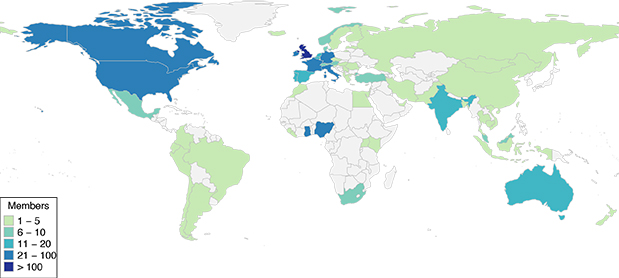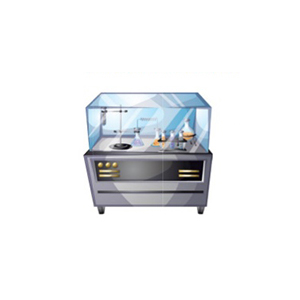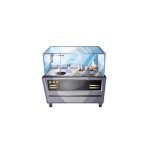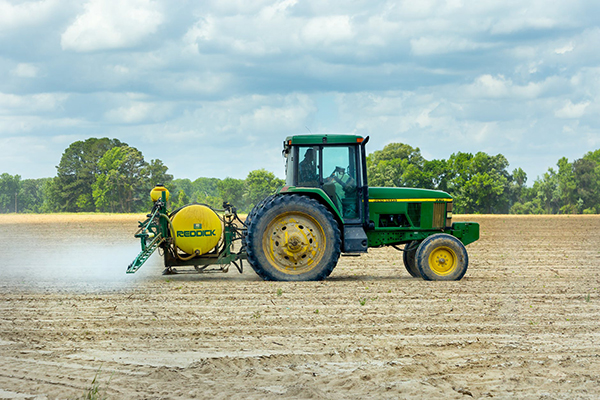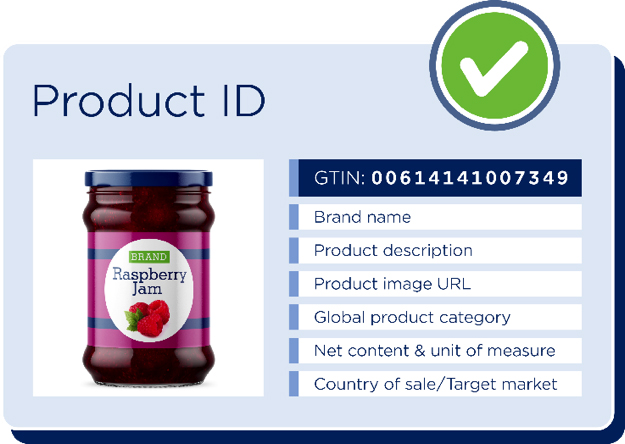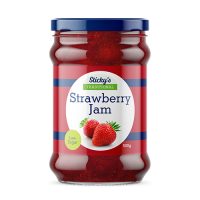Today’s food producers and retailers are in a constant race against time. This race starts within the four walls of the distribution center, where products must move from receiving, through storage and dispatch—with high speed and accuracy. While the goal (or finish line) is to get these products to stores as fast as possible and meet consumer expectations, speed of delivery also plays a vital role in ensuring the quality of foods—particularly easily perishable ones like fruits, vegetables, eggs, meats, certain dairy products and baked goods.
Namely, efficient product flow means companies can meet shorter lead times and thereby deliver fresher, safer food—with longer shelf lives—to market. It’s a seemingly easy concept, yet many organizations continue to stumble as a result of ongoing operational challenges that slow distribution down, especially in facilities that continue to utilize manual order picking.
Major challenges include:
- Continued reliance on physical labor with fulfillment speed highly dependent on the endurance of individual employees.
- SKU proliferation due to product diversification, where facilities must now store and manage more products than ever before in a seemingly shrinking amount of space.
- Seasonal spikes in business that require order picking staff to work harder and often longer hours to keep up with the influx of orders.
For organizations struggling to address these challenges and meet the need for speed in distribution, now is an opportune time to look at automation. There are now robotic order picking systems that can store, retrieve and move products effortlessly through a facility, ensuring rapid handling and very short lead times.
By choosing to automate, food producers and retailers can realize numerous benefits, including the following.
1. Accelerated Order Fulfillment
Naturally a robotic system can assemble orders and prepare them for outbound shipping far faster than humanly possible. Thus, an automated distribution center is often up to six times more efficient than a manual one. Notably, there are systems now that integrate order picking and product handling in a single solution, rather than separate functions (as traditionally done but which is too slow for fresh food distribution).
Such a system can perform both buffer storage and order picking in one simultaneous operation for significant time savings. Facilities can thereby prepare orders closer to the time of a truck’s arrival, instead of hours in advance. Foods then spend less time in transport and can maintain their quality and consistency. This also helps to reduce chances of spoilage, which in turn cuts back on waste and the supply chain’s impact on the environment.
2. Improved Ergonomics and Workplace Safety
In distribution centers that rely solely on manual order picking, employees have to run up and down long stretches of aisles and lift heavy crates or boxes. In addition to being inefficient, such manual operations make order picking a strenuous and injury-prone job. The risks for injury have only helped further the labor shortage problem seen nationwide, as job seekers show declining interest in material handling careers.
But when automated systems take over the majority of order picking processes, there is less human involvement—which can help fill in any gaps left by labor shortages. Order fulfillment speed also becomes less dependent on the physical capabilities of employees. Existing staff can then be elevated into new roles in managing and overseeing automated systems. These are safer and far more enriching positions that can draw a whole new pool of technical talent.
3. Better Space Utilization
As mentioned, there is a growing trend towards product diversification, where companies are now offering more options to consumers, such as additional sizes, flavors and health-conscious choices. As a result, the number of SKUs in most distribution centers is exploding. Some facilities once designed to house a few hundred SKUs are now dealing with thousands, leaving little room to spare.
Those challenged by SKU proliferation can consider an overhead robotic system that uses high-density, floor-based storage, where goods are stacked on the warehouse floor. This eliminates the need for racking or traveling around aisles. Plus, it reduces the number of movements required to pick an order. Facilities can store more products within their existing space, offsetting the costs of possible new construction. An overhead robotic system can also clear all products from the warehouse floor for easy, hygienic cleaning.
4. Flexibility to Keep Up During Seasonal Peaks
In all consumer goods industries, there are times of the year when demand spikes and orders come pouring in. For the food industry, companies tend to see spikes during the holiday season and in the summer months—times when people commonly host get-togethers.
Seasonal peaks can take a heavy toll on manual warehouse operations. Some try to hire temporary employees to get by, but that comes with challenges in providing proper training in a short span of time. But automated systems—particularly those with a modular design—are flexible and scalable, enabling facilities to adjust their number of robots to meet fluctuations in order volume—during seasonal highs and lows.
A notable example of a food company that is successfully leveraging automation is grocery leader Kroger. Namely, Kroger wanted to develop a state-of-the-art, automated plant and distribution center to achieve many of the benefits discussed above, including ensuring product quality and reducing employee risks of injury.
Built in Denver, Colorado, Kroger’s “Mountain View Foods” facility processes fresh conventional and organic milk, and packages aseptically processed milk, creams and juices. Within Mountain View Foods, Kroger has installed an end-to-end automated system that can store up to 36,000 crates and pick 32,000 crates per day. Cases are picked according to specified sequences on one end of the facility and then palletized for truck loading at the other, with significant storage buffering in between.
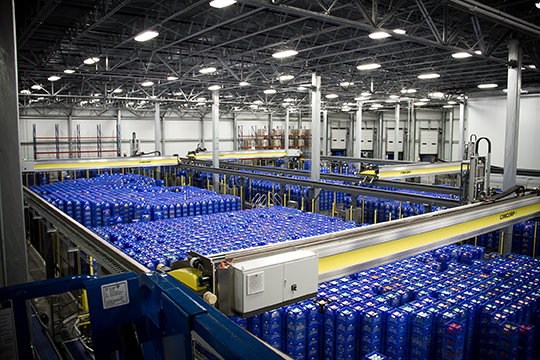
A warehouse control system (WCS) controls all robotic movements and serves as the brains behind the automation. The software also collects data on each processed order, giving Kroger traceable information to meet food safety requirements. Kroger benefits from orders picked with 100-percent accuracy, at faster speeds, which results in shorter lead times and optimal product freshness for shoppers.
Kroger’s story demonstrates the power of automation in enabling more streamlined order fulfillment. Those that choose to automate can overcome the many challenges that inhibit efficient product flow and thereby bolster their supply chain velocity. Simply put, faster fulfillment means fresher products in stores. And, fresher products are safer products for consumers to enjoy.





